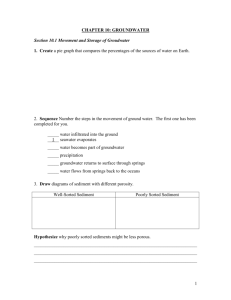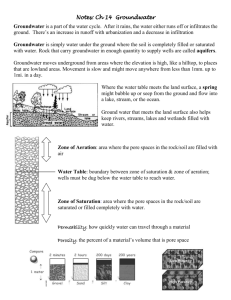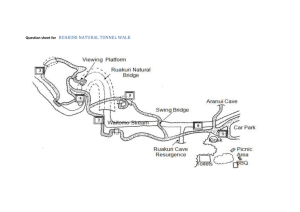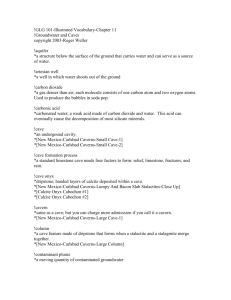Groundwater Erosion and Deposition
advertisement
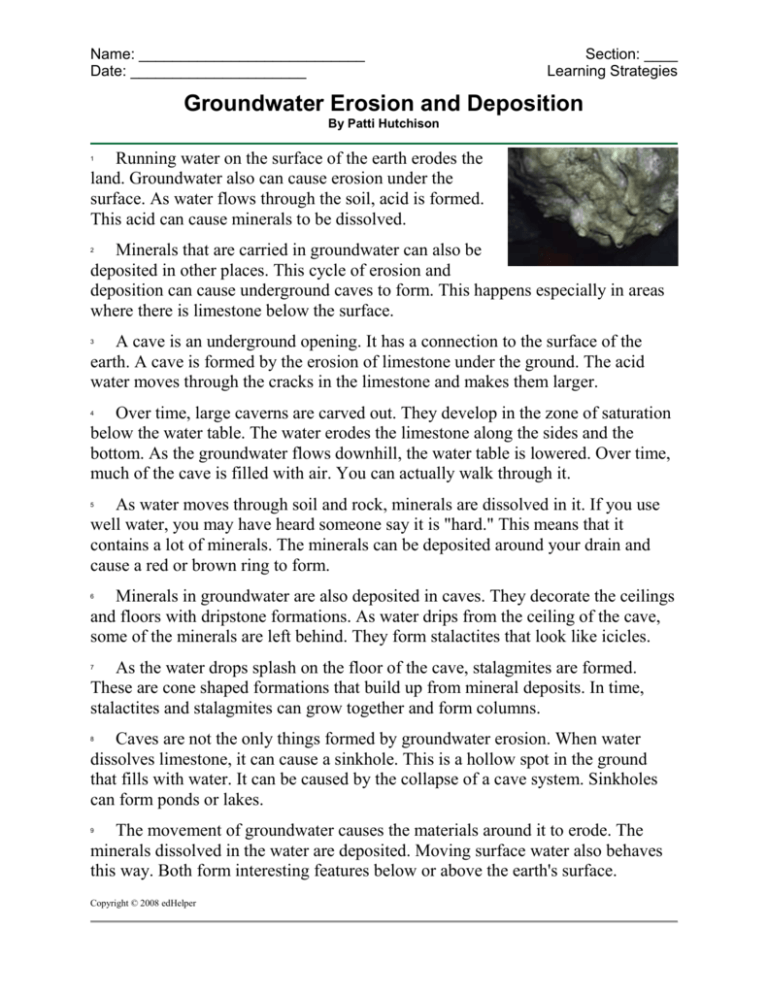
Name: ___________________________ Date: _____________________ Section: ____ Learning Strategies Groundwater Erosion and Deposition By Patti Hutchison Running water on the surface of the earth erodes the land. Groundwater also can cause erosion under the surface. As water flows through the soil, acid is formed. This acid can cause minerals to be dissolved. 1 Minerals that are carried in groundwater can also be deposited in other places. This cycle of erosion and deposition can cause underground caves to form. This happens especially in areas where there is limestone below the surface. 2 A cave is an underground opening. It has a connection to the surface of the earth. A cave is formed by the erosion of limestone under the ground. The acid water moves through the cracks in the limestone and makes them larger. 3 Over time, large caverns are carved out. They develop in the zone of saturation below the water table. The water erodes the limestone along the sides and the bottom. As the groundwater flows downhill, the water table is lowered. Over time, much of the cave is filled with air. You can actually walk through it. 4 As water moves through soil and rock, minerals are dissolved in it. If you use well water, you may have heard someone say it is "hard." This means that it contains a lot of minerals. The minerals can be deposited around your drain and cause a red or brown ring to form. 5 Minerals in groundwater are also deposited in caves. They decorate the ceilings and floors with dripstone formations. As water drips from the ceiling of the cave, some of the minerals are left behind. They form stalactites that look like icicles. 6 As the water drops splash on the floor of the cave, stalagmites are formed. These are cone shaped formations that build up from mineral deposits. In time, stalactites and stalagmites can grow together and form columns. 7 Caves are not the only things formed by groundwater erosion. When water dissolves limestone, it can cause a sinkhole. This is a hollow spot in the ground that fills with water. It can be caused by the collapse of a cave system. Sinkholes can form ponds or lakes. 8 The movement of groundwater causes the materials around it to erode. The minerals dissolved in the water are deposited. Moving surface water also behaves this way. Both form interesting features below or above the earth's surface. 9 Copyright © 2008 edHelper Groundwater Erosion and Deposition 1. An underground opening that 2. Where are caves formed? connects to the surface of the earth is called a: Cave Pond Lake 3. What is "hard" water? 4. Stalactites form ______. In a sink hole On the ceiling of a cave On the floor of a cave 5. A hollow spot in the ground that fills 6. Sinkholes can form lakes or ponds. with water is called a ______. Cave Sinkhole Stalagmite False True

